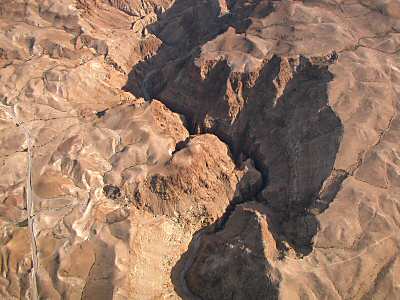
Because of its lack of water and good routes, the Judean wilderness has been (mostly) uninhabited throughout history. Consequently it was an ideal place for those seeking refuge from enemies or retreat from the world. When on the run from King Saul, David hid in various places in the Judean wilderness (the Wilderness(es) of Ziph, Maon, and En Gedi are part of the Judean Wilderness). John the Baptist preached here, and it seems likely that this was the wilderness where Jesus was tempted. Herod the Great built two fortresses (Herodium and Masada) in this area for protection should his people ever revolt against him. —from BiblePlaces.com

The Nahal Darga is the largest wadi in the northern Judean desert, and it is one of the five largest in the entire Judean desert. It is 27 miles (43 km) long and drains about 89 sq. mi. (230 sq. km). The Nahal Darga is up to 650 feet (200 m) deep. Most wadis begin with an abrupt drop of 100 meters (330 ft.), but this one drops in a series of short falls, each less than 10 meters (33 ft.). The water stays in small pools at the bottom of each fall because the narrow shape of the canyon keeps sunlight from reaching it. These pools are the most reliable source of water north of En Gedi. —from BiblePlaces.com
A psalm of David. When he was in the Desert of Judah.
O God, you are my God,earnestly I seek you;
my soul thirsts for you,
my body longs for you,
in a dry and weary land
where there is no water.
I have seen you in the sanctuary
and beheld your power and your glory.
Because your love is better than life,
my lips will glorify you.
I will praise you as long as I live,
and in your name I will lift up my hands.
My soul will be satisfied as with the richest of foods;
with singing lips my mouth will praise you. —Psalm 63:1-5
No comments:
Post a Comment